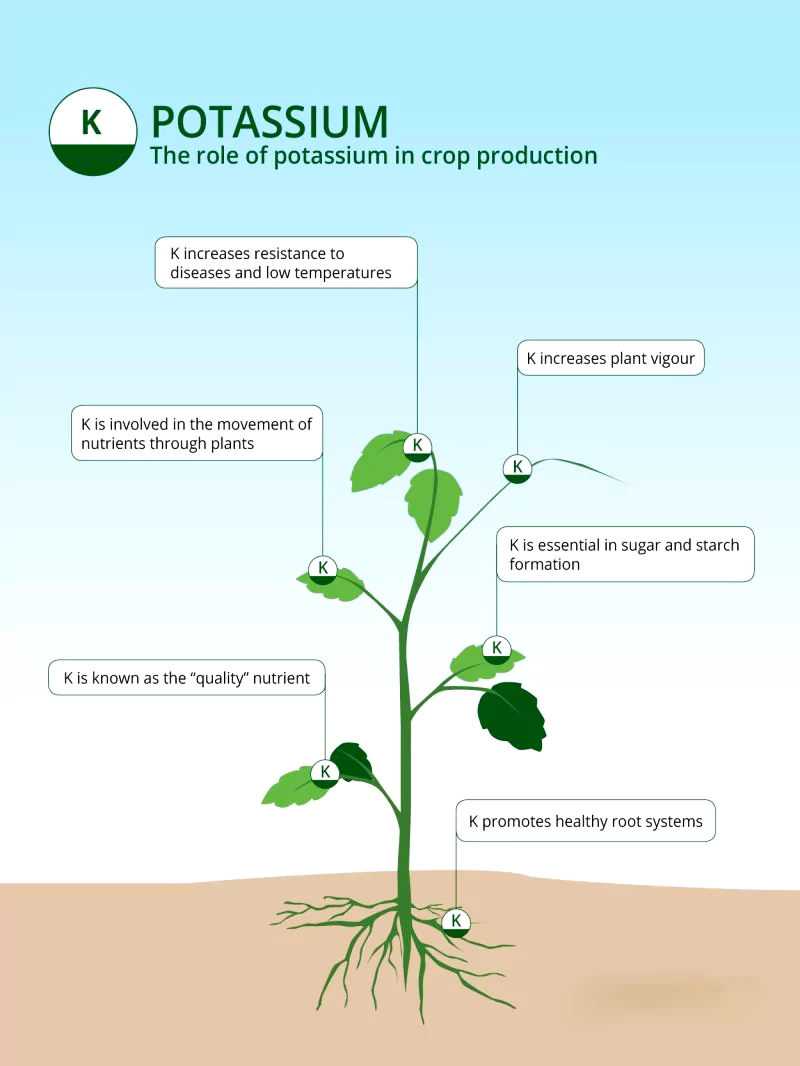The Punjab government has announced plans to explore potash mining in Fazilka and Sri Muktsar Sahib districts.
Discovery of Potash reserves
- Geological Survey of India (GSI) surveys have detected large potash reserves in three mining blocks:
- Kabarwala (Muktsar Sahib)
- Sherewala and Ramsara (Fazilka)
- Shergarh and Dalmir Khera (Fazilka)
- Rajasthan is another state with significant potash reserves, mainly in the Nagaur-Ganganagar basin.
Enroll now for UPSC Online Course
About Potash and Its Uses
- Potash is an impure combination of potassium carbonate and potassium salts.
- Principal Ore: Sylvinite is the primary source of potash.
- Classification: Potash is classified as a critical mineral under The Mines and Minerals (Development and Regulation) Amendment (MMDR) Act, 2023.
 Applications:
Applications:-
- Agriculture: Over 90% of potash is used as a fertilizer, making it one of the three essential nutrients (N-P-K) for plant growth.
- The ideal nutrient ratio for plants is 4:2:1 (N:P:K).
- Water Purification: Potash alum is used to remove water hardness and has antibacterial properties.
- Industrial Uses: Potash is used in glass and ceramics manufacturing, soap and detergent production, and explosives.
- Common Types of Potash Fertilizers
- Sulphate of Potash (SOP): Premium, chloride-free fertilizer used for high-value crops like fruits and vegetables.
- Muriate of Potash (MOP): Contains chloride, commonly used for carbohydrate crops such as wheat.
- Potash Derived from Molasses (PDM): 100% indigenous fertilizer under the Nutrient-Based Subsidy (NBS) scheme, which provides subsidies based on actual nutrient content (N, P, K).
Status of Potash Production in India
- Import dependence: India does not currently engage in potash mining and is entirely dependent on imports.
- Reserve Potash: Total estimated potash resources in India stand at 23,091 million tonnes (as of 2020).
- Rajasthan contributes 89% of the total potash reserves in India.
- Delay in Mining: Despite discoveries in Punjab in 2019, mining has not yet commenced due to feasibility studies and environmental concerns.
Global Potash Reserves and Production
- The total global potash reserves exceed 3.6 billion metric tons (MT) of potassium oxide equivalent.
- Largest reserves: include Canada (1.1 billion MT), Belarus (750 million MT), and Russia (650 million MT).
- Top Three Potash Producers (2023) : Canada(13 million MT), Russia (6.5 million MT) and China (6 million MT).
Check Out UPSC CSE Books From PW Store
Significance of Potash Mining
- Reducing Import Dependence: India imports 50 lakh tonnes of potash annually, mainly for fertilizers and industrial use. Domestic production can significantly reduce reliance on imports, enhancing agricultural self-sufficiency.
- Boosting the Domestic Fertilizer Industry: India’s fertilizer sector can become more competitive with locally sourced potash.
- Farmers may benefit from lower fertilizer costs and improved access to high-quality potash-based fertilizers.
- Economic Benefits: Potash mining in Punjab and Rajasthan can generate employment opportunities and drive regional economic development. The government expects mining to create new job prospects for local communities.
- Environmental and Social Concerns : Some farmers in Muktsar and Fazilka have expressed concerns about land acquisition for mining.
- The Punjab government has assured that extraction will use an advanced drilling system with zero impact on land ownership.
- Environmental and social impact assessments are being conducted to mitigate risks before starting operations.
Ready to boost your UPSC 2025 preparation? Join PW’s UPSC online courses today!
![]() 11 Feb 2025
11 Feb 2025

 Applications:
Applications: